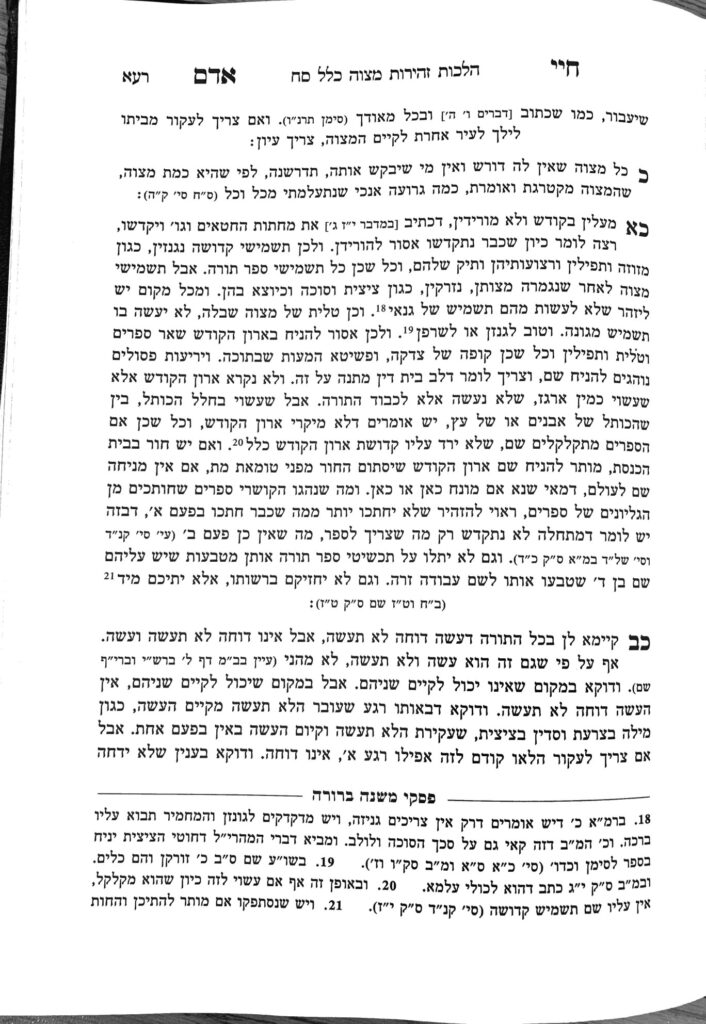We are beginning siman 21. The Chayei Adam begins with one halacha and then connects it to another. He begins with the concept of maalin bakodesh v’ein moridin, an object of one level of kedusha can be raised to a higher level of kedusha, but cannot be lowered. The Chayei Adam brings a source from the story of Korach. The Gemara (Menachos 99) says that Hashem tells Moshe to take the incense burners used by Korach’s followers and make a cover for the mizbe’ach out of them. The Chayei Adam explains that since they were used for a level of kedusha (to bring ketores), they must be used for an equal or greater level of kedusha.
The Gemara brings a separate source for the issur of using something for a lower level of kedusha. Without either drasha, one may have argued that an object cannot be changed from its level of usage at all, but must always be used at its same level of kedusha. Even with the drasha that it may be raised, we do not know that it is assur to lower it. Therefore, the Gemara brings two drashos, one to teach that it may be raised, and another to teach that it may not be lowered.
The rishonim discuss whether the primary drasha is the drasha not to lower the object or to raise it. In other words, is the Torah primarily concerned with maintaining the object at its status, or does the Torah want a person to put effort to try to raise the object to a higher level of kedusha. We will see more about this question as we go further.
The Chayei Adam shifts from this halacha to the halacha that if an object used for kedusha purposes becomes worn out, it cannot be used for anything else. It must be put into geniza, also known as shaimos.
Seemingly, without this second halacha, if an item is no longer usable for its kedusha purposes, one would be allowed to use it for any other purose. Since we have this second halacha, we have to find a way to halachically dispose of it, so we put it in geniza.
There are other halachic purposes for geniza as well. The pasuk says that all avodah zarah, including the names of the avodah zarah, must be destroyed. The following pasuk says lo saasu kein laHashem, not to do so to Hashem. We learn that there is an issur deoraysa to erase Hashem’s name. We colloquially refer to geniza as shaimos because we use it to avoid this issur of erasing Hashem’s name by disposing of Hashem’s names in ways which do not cause them to get inadvertantly erased. The Chayei Adam is tying in the halacha of geniza to the halacha of maalin bakodesh.
We will begin by discussing the halachos of maalin bakodesh and then we will discuss the halachos of geniza.
Summary
An object used for kedusha purposes cannot be used for a lower level of kedusha, but may be rasied to a higher level of kedusha.
Once the object is no longer useable, it must be placed in geniza.



